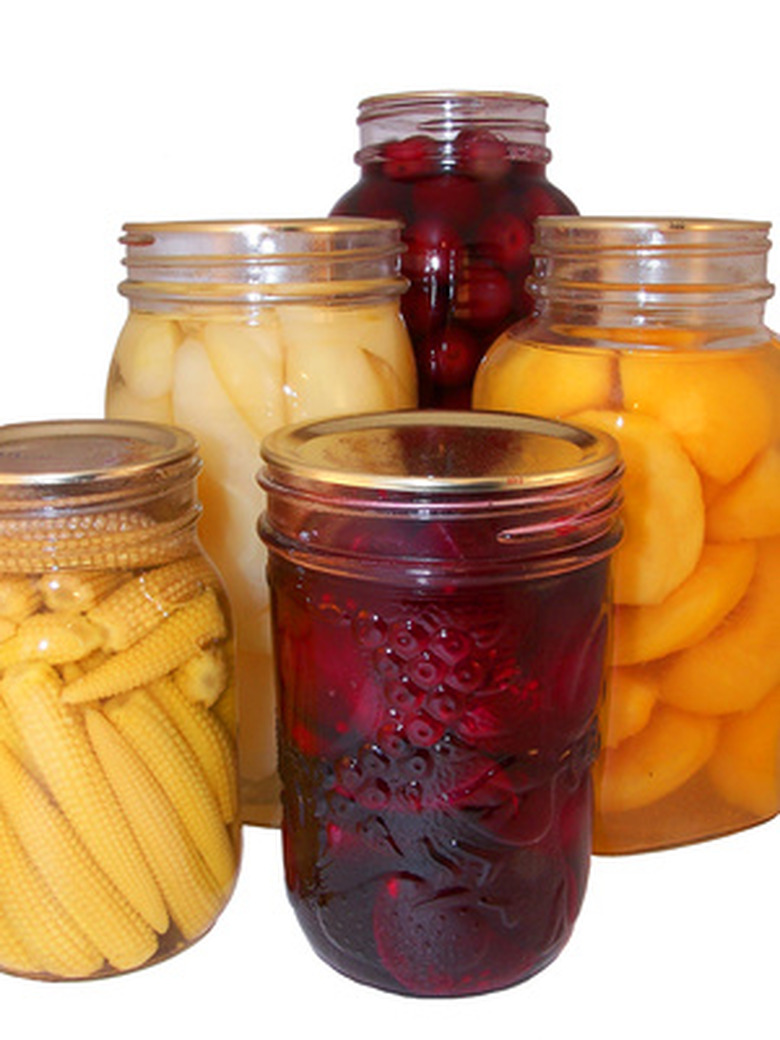Citric Acid & Canning Fruits
Citric acid is often added when canning fruits at home so that the preserved fruit is safe to eat. Though most fruit has some acid, a specific pH balance is required to kill harmful bacteria that can cause food poisoning. Citric acid helps kill those bacteria.
Definition
Citric acid is a food preservative that is sold as a powder and mixed with water to create a syrup solution that you can then add to fruit before sealing the cans. You can use lemon juice can as an alternative, however citric acid is usually more effective.
When to Use
Citric acid is often used when canning fruits with a low acid content. Acid is required to kill botulinum spores that can cause a deadly form of food poisoning called botulism. Heat alone will not usually destroy them. Very few fruits contain enough acid to naturally combat these spores. Even fruits that are considered to be high in acid, such as tomatoes, require a boost from citric acid.
- Citric acid is often added when canning fruits at home so that the preserved fruit is safe to eat.
Function
Citric acid is used to bring canned fruit's pH level to below 4.6, which is the point that botulinum spores are destroyed. All low-acid foods have a pH level that is higher than 4.6. Some canning recipes, such as those for pickles, sauerkraut and jam, call for an acid component that renders the food safe. When canning fruits in syrup or juice, however, it is very important to add the citric acid. In addition to keeping food poisoning at bay, citric acid also prevents fruits, such as apples and pears, from turning brown in the jars.
Citric Syrup
Immersing the fruit in a mixture of citric acid and juice or sugar syrup is the best way to raise canned fruit's acid content. The amount of syrup required depends on the type of fruit. Most canning instructions will include the amount of acid needed for the particular fruit. Generally speaking, you should add 1 tbsp. of citric acid for every quart of liquid in the syrup.
- Citric acid is used to bring canned fruit's pH level to below 4.6, which is the point that botulinum spores are destroyed.
Considerations
Choose fruit that is fresh, firm and free of rotten spots. Wash the fruit thoroughly before processing it. Make sure that all canning supplies, including jars, lids and seals, are sterile.
